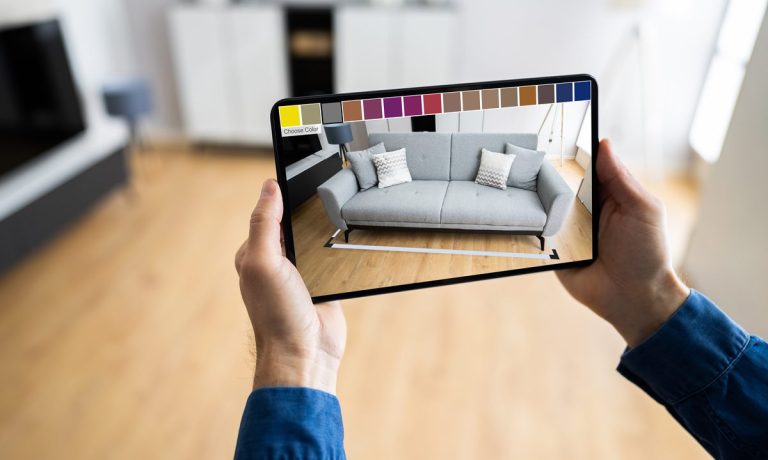eCommerce Needs To Evolve Beyond Decades-Old Transaction-Based Mindset

Shopping at most merchants online has a familiar feel: A webpage with a photo grid of 25 or so items, each with a description or fun product name. Maybe the items expand when your mouse hovers over them; maybe a chatbot says hello. But other than some branded elements, the experience doesn’t differ all that much from one eCommerce site to another.
“This interface was really created to sell books 25 years ago,” Neha Singh, CEO at experiential shopping software platform Obsess, told PYMNTS. “And then somehow it got used for every brand and every category and hasn’t really evolved much.”
As the adoption of eCommerce accelerates, though, and both retailers and consumers seek out a seamless experience between online and in-store, the grid of thumbnails may no longer cut it, especially with younger consumers accustomed to interactive and visual experiences with social media and video games.
“Over the last year as brands realized the importance of eCommerce and how much it accelerated, they realized that they have to create more of an engaging experience for consumers,” Singh said. “It can’t just be purely transaction-based, as it is today.”
The solution, at least from Singh’s perspective, is an augmented reality (AR) or virtual reality (VR) experience that allows shoppers to feel like they’re browsing in a store. Already used by Levi’s, Tommy Hilfiger, Ralph Lauren and other brands, Obsess creates a virtual store, either replicating a real-world location or creating something totally new, where consumers can browse and shop as they would without the internet.
“A lot more people can experience this, even if they can’t be there in person,” Singh said. “It just basically increases the audience for your retail stores.” Brands can also incorporate interactive content, such as quizzes, videos and appointment booking, to keep customers engaged.
Initially Singh said she was targeting luxury retailers and other merchants where the experience is a more key piece to the brand, but over the past 18 months, Obsess has seen a 400 percent increase in inquiries about its technology. The company now works with Sam’s Club, Party City and other retailers who want to create a more engaging experience.
“Today’s eComm platforms just don’t give you that flexibility,” Singh said. “They give you the template with the grid, so it’s really something that needs innovation from the technology side.”
Other Applications
This, of course, is not the only way brands are utilizing AR to reach potential customers. Beauty technology company Perfect Corp. has teamed with Google, Facebook and other platforms to allow consumers to virtually try on makeup, and earlier this year, the company expanded into fashion for things such as eyewear and earrings.
See also: Perfect Brings Makeup Into The Connected Economy
Photo-sharing app Snapchat also earlier this year beefed up its interactive features, especially those related to AR, in order to strengthen its place in the social commerce ecosystem. Users can now use the app’s Scan feature to take a picture of an outfit and get shopping recommendations through Snap subsidiary Screenshop, and brands such as Estee Lauder, FARFETCH and Prada are using Snapchat’s AR tools to let users virtually try on clothes and makeup.
Read: Snap Beefs Up Social Commerce With New AR Tools
And though it’s unclear what form it might take, Apple and T-Mobile are teaming up on an AR innovation program through the mobile carrier’s tech incubator, hubraum. The program spent the last several weeks recruiting iOS developers who have worked on AR applications that could be boosted using 5G and Low Latency Edge Computing, and it will kick off next month. The innovation program is focusing including retail, communication, gaming and sports, among others.
Room To Grow
The majority of consumers, 55 percent, are interested in trying new connected shopping experiences in the future, PYMNTS research has found, whether it be AR shopping to reduce uncertainty, using smart mirrors in stores to make purchasing more efficient, or shopping via voice assistant. That includes 72 percent of bridge millennials — the first generation of consumers to have grown up with connected devices on hand — and 70 percent of superconnected consumers.
Read more: How We Will Pay 2020: With Connected Devices, At Home And During The Week
And there’s plenty of room to for retailers grow their use of AR. According to eMarketer, the U.S. will have over 93 million monthly AR users this year, or about 28 percent of the population, but only 10 percent have used the technology to shop. Still, 36 percent of women and 31 percent of men say they would be somewhat interested in trying it.
Singh said her goal isn’t to replace retail stores — when the pandemic is over, she’s sure they’ll rebound — but to make the online experience as engaging as going into a retail store.
“Ultimately, the new generation of consumers … is so used to these interactive experiences, and if brands don’t keep up, then they’re going to become more irrelevant.”